Related Research Articles

Memphis was the ancient capital of Inebu-hedj, the first nome of Lower Egypt. Its ruins are located near the town of Mit Rahina, 20 km (12 mi) south of Giza in Greater Cairo, Egypt.

In Egyptian mythology, Ptah is the demiurge of Memphis, god of craftsmen and architects. In the triad of Memphis, he is the husband of Sekhmet and the father of Nefertum. He was also regarded as the father of the sage Imhotep.
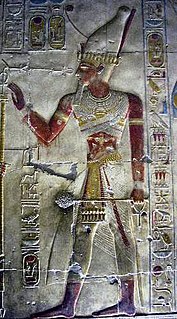
Menmaatre Seti I was a pharaoh of the New Kingdom Nineteenth Dynasty of Egypt, the son of Ramesses I and Sitre, and the father of Ramesses II. As with all dates in Ancient Egypt, the actual dates of his reign are unclear, and various historians claim different dates, with 1294 BC to 1279 BC and 1290 BC to 1279 BC being the most commonly used by scholars today.

Menpehtyre Ramesses I was the founding pharaoh of ancient Egypt's 19th dynasty. The dates for his short reign are not completely known but the time-line of late 1292–1290 BC is frequently cited as well as 1295–1294 BC. While Ramesses I was the founder of the 19th dynasty, his brief reign mainly serves to mark the transition between the reign of Horemheb, who had stabilized Egypt in the late 18th dynasty, and the rule of the powerful pharaohs of his own dynasty, in particular his son Seti I, and grandson Ramesses II, who would bring Egypt to the height of its imperial power.

Muwatalli II was a king of the New Kingdom of the Hittite empire.

Merneptah or Merenptah was the fourth pharaoh of the Nineteenth Dynasty of Ancient Egypt. He ruled Egypt for almost ten years from late July or early August 1213 BC until his death on May 2, 1203 BC, according to contemporary historical records. He was the thirteenth son of Ramesses II and only came to power because all his older brothers, including his full brother Khaemwaset or Khaemwase, had died. By the time he ascended to the throne, he was probably around seventy years old. His throne name was Ba-en-re Mery-netjeru, which means "The Soul of Ra, Beloved of the Gods".
Prince Khaemweset was the fourth son of Ramesses II, who was born c. 1303 BCE; died July or August 1213 BCE; reigned 1279–1213 BCE, and the second son by his queen Isetnofret. He is by far the best known son of Ramesses II, and his contributions to Egyptian society were remembered for centuries after his death. Khaemweset has been described as "the first Egyptologist" due to his efforts in identifying and restoring historic buildings, tombs and temples.

The necropolis of El-Khokha is located on the west bank of the river Nile at Thebes, Egypt. The necropolis is surrounds a hill and has five Old Kingdom tombs and over 50 tombs from the 18th, 19th and 20th dynasties as well as some from the first intermediate period and the late period.
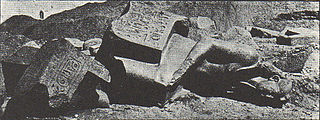
Smenkhkare Imyremeshaw was an Egyptian pharaoh of the mid 13th dynasty during the Second Intermediate Period. Imyremeshaw reigned from Memphis, starting in 1759 BC or 1711 BC. The length of his reign is not known for certain; he may have reigned for 5 years and certainly less than 10 years. Imyremeshaw is attested by two colossal statues now in the Egyptian Museum, Cairo.
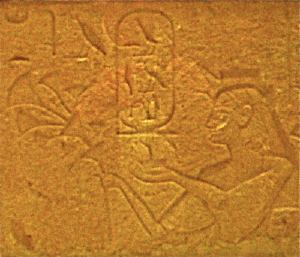
Tuya was the wife of Pharaoh Seti I of the Nineteenth Dynasty of Egypt and mother of Tia, Ramesses II, Nebchasetnebet, and perhaps Henutmire.

Meir is a village in Upper Egypt. It is located on the west bank of the Nile, in the Asyut Governorate, some 7 kilometers southwest of el-Qusiya (Cusae). The modern village is situated at coordinates 27°27′00″N30°45′00″E, while the necropolis is located at 27°25′00″N30°43′00″E.
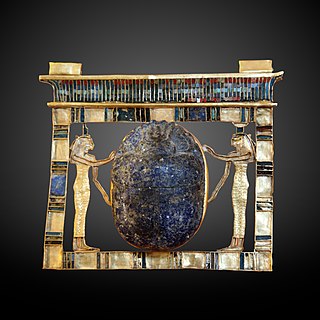
The Ancient Egyptian Noble Paser was vizier, in the reigns of Seti I and Ramesses II, during the 19th dynasty. He would later also become High Priest of Amun.

Amenhotep (Huy) was the high steward of Memphis under Amenhotep III in the Egyptian 18th Dynasty. With this title he was one of the highest officials at the royal court.
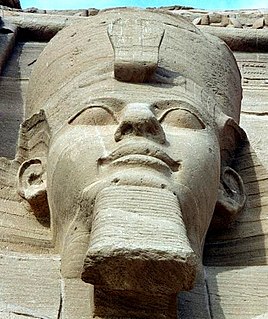
Ramesses II, also known as Ramesses the Great, was the third pharaoh of the Nineteenth Dynasty of Egypt. He is often regarded as the greatest, most celebrated, and most powerful pharaoh of the New Kingdom, itself the most powerful period of Ancient Egypt. His successors and later Egyptians called him the "Great Ancestor".

The High Priest of Ptah was sometimes referred to as "The Greatest of the Directors of Craftsmanship" (wr-ḫrp-ḥmwt). This title refers to Ptah as the patron god of the craftsmen.
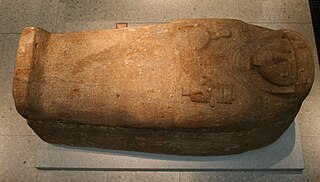
Hori was the High Priest of Ptah at the very end of the reign of Ramesses II. Hori succeeded Neferronpet in office.

Ipy, also transliterated as Apy, was a court official from the time of Amenhotep III and Akhenaten during the Egyptian 18th Dynasty. Ipy was High Steward of Memphis, and a royal scribe.

Tia was an ancient Egyptian high official under king Ramses II. His main title was that of an overseer of the treasuries. Tia was married to a woman with the same name, the princess Tia who was sister of Ramses II.
Ptahemwia was an Ancient Egyptian official who lived under king Ramses II in the 19th Dynasty, around 1250 BC.
References
- ↑ Said Gohary: The Twin Tomb Chapel of Nebnefer & his son Mahu at Sakkara, Cairo 2009, ISBN 978-977-479-436-0, p. 37
- ↑ Gohary: The Twin Tomb Chapel of Nebnefer & his son Mahu at Sakkara, p. 13
- ↑ Gohary: The Twin Tomb Chapel of Nebnefer & his son Mahu at Sakkara,p. 37
- ↑ Gohary: The Twin Tomb Chapel of Nebnefer & his son Mahu at Sakkara, p. 11
- ↑ Gohary: The Twin Tomb Chapel of Nebnefer & his son Mahu at Sakkara, pl. 3